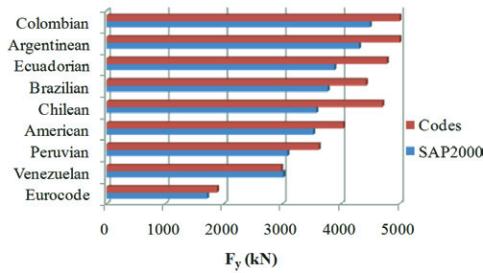Basic HTML Version




818
IBRACON Structures and Materials Journal • 2012 • vol. 5 • nº 6
Comparative study of codes for the seismic design of structures
riods of 0.2s and 1.0s and the period T
D
that defines the displace-
ment governed region of the spectrum.
Another very important issue to be discussed in the future re-
gards the definition of the recurrence periods. The ASCE/SEI
7/10 already redefined this parameter from the traditional 475
years to 2475 years. To adopt this definition would lead, as a
major consequence, to an important increase in the design seis-
mic forces presently defined in the standards. This discussion is
essential and urgent, since it implies in the level of reliability that
our constructions will possess from now on. As already shown
by Santos [13], with the safety factors presently defined, for in-
stance in the Eurocode 8, the structural reliability coefficients
under seismic conditions are dramatically inferior to the ones
evaluated under operational conditions.
The authors intend, in a future paper, present comparisons among
the South American and other important international standards for
seismic design, such as the Japanese standard. Other aspects are
not yet treated herein, but will be subject of future studies by the au-
thors, such as the effect of different levels of detailing for attaining
better ductility, the impact of irregularities in the design, the second
order effects, and also the definition of different levels of seismic input
for design (such as frequent and exceptional design earthquakes).
The substantial differences in the design criteria present in the
South American standards for seismic design poses important
problems from the point of view of the engineering practice, con-
sidering the crescent economical integration in the continent. Due
to historical and political reasons it is not to be expected in a near
future a unification of these standards, as occurred in the Euro-
pean Community.
Nevertheless, as shown in this paper, there are some important
issues that shall be discussed in the future in the engineering com-
munity, envisaging future revisions in the South American seismic
standards. It is expected that this paper could be of some value for
encouraging the future improvement and integration among of the
South American seismic standards.
6. References
[01] American Society of Civil Engineers (ASCE).
Minimum
Design Loads for Buildings and Other Structures
Figure 6 – Obtained displacements, direction X
Figure 7 – Obtained displacements, direction Y
Figure 8 – Obtained total forces, direction X
Figure 9 – Obtained total forces, direction Y

